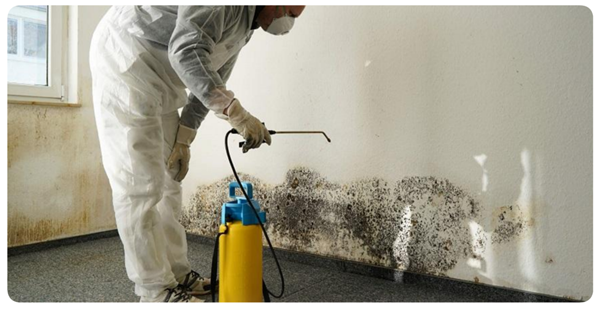What to Look for When Purchasing Dampening Rollers
Understanding the Importance of Dampening Rollers
Dampening rollers play a crucial role in the printing process, ensuring that the ink adheres properly to the printing plates and ultimately onto the paper. These rollers are part of the dampening system, which controls the amount of water applied to the printing plate. Without the correct amount of moisture, the ink can spread unevenly, leading to smudges and poor-quality prints. Therefore, choosing the right dampening rollers is essential for achieving high-quality prints. When selecting dampening rollers, you should consider several factors to ensure you get the best performance and longevity from your equipment. This article will guide you through these considerations, helping you make an informed decision.
ADDITIONALLY : Enhance your printing quality today by investing in high-performance Dampening rollers. Click here to explore our range of premium dampening rollers designed to deliver superior print results and ensure the longevity of your printing equipment. Don’t settle for less—upgrade your dampening rollers now!
Material and Construction Quality
The material and construction quality of dampening rollers are critical to their performance and durability. Dampening rollers are typically made from materials like rubber or synthetic compounds, which are chosen for their ability to absorb and transfer water effectively. High-quality materials ensure that the rollers maintain their shape and performance over time, even under continuous use. When assessing the material quality, look for rollers that are resistant to chemicals and wear, as these factors can significantly impact their lifespan. Additionally, the construction quality, including the precision of the roller’s surface and its core material, plays a vital role in ensuring consistent performance. Rollers with a smooth, even surface distribute water more effectively, leading to better print quality.
Compatibility with Your Printing Press
Dampening rollers must be compatible with your specific printing press to function correctly. Different printing presses have varying requirements for roller size, material, and hardness. It is essential to consult your printing press manufacturer’s guidelines when selecting dampening rollers to ensure they meet the necessary specifications. Using incompatible rollers can lead to improper water distribution, increased wear on both the rollers and the press, and ultimately lower print quality. Compatibility also includes considering the roller’s mounting and alignment mechanisms. Ensuring that the rollers fit perfectly and align correctly with your press will help maintain optimal performance and prevent mechanical issues.
Roller Hardness and Shore A Rating
The hardness of dampening rollers, measured by the Shore A rating, affects how they interact with the printing plate and the amount of water they transfer. Rollers with different hardness levels are suitable for various types of printing jobs. Generally, softer rollers (lower Shore A rating) provide better water transfer but may wear out faster, while harder rollers (higher Shore A rating) are more durable but may not transfer water as efficiently. When choosing dampening rollers, consider the type of printing you do most frequently and select a hardness level that balances water transfer efficiency with durability. Your printing press manufacturer or a trusted supplier can provide recommendations based on your specific needs.
Maintenance and Cleaning Requirements
Proper maintenance and cleaning of dampening rollers are crucial for their longevity and performance. Some rollers are designed to be easier to clean and maintain than others. When selecting dampening rollers, consider how often they need to be cleaned and the type of cleaning agents required. Rollers that require frequent or complicated maintenance can increase downtime and operational costs. Additionally, using harsh cleaning agents can degrade the roller material over time, reducing their effectiveness. Look for rollers that are compatible with gentle, effective cleaning solutions and have a design that simplifies the maintenance process. Regular cleaning and proper maintenance will help extend the life of your dampening rollers and ensure consistent print quality.

Cost and Value for Money
While cost is always a factor when purchasing equipment, it is essential to consider the overall value for money when selecting dampening rollers. Higher-priced rollers made from premium materials and with superior construction quality may offer better performance and longer lifespan, ultimately providing better value. Conversely, cheaper rollers may save you money initially but could require more frequent replacements and lead to lower print quality, increasing your overall costs in the long run. When evaluating the cost, consider factors like the roller’s expected lifespan, maintenance requirements, and performance. Investing in high-quality dampening rollers can improve your print quality and reduce downtime, providing better value over time.
Supplier Reputation and Support
The reputation and support offered by your roller supplier can significantly impact your purchasing experience and the performance of your dampening rollers. A reputable supplier with a track record of providing high-quality products and excellent customer service can help you make a more informed decision. They can offer valuable insights into the best rollers for your specific needs, provide technical support, and assist with any issues that arise. Additionally, a good supplier will have a clear return and warranty policy, ensuring that you are covered in case of any defects or performance issues. Research potential suppliers, read reviews, and ask for recommendations from industry peers to find a trusted supplier who can provide the support you need.
Customization Options
Some printing operations have unique requirements that off-the-shelf dampening rollers cannot meet. In such cases, customization options become essential. Many reputable suppliers offer customization services, allowing you to specify the material, hardness, size, and other features of your dampening rollers to match your exact needs. Custom rollers can improve your printing efficiency, reduce waste, and enhance print quality by ensuring the rollers are perfectly suited to your press and printing requirements. When considering customization, work closely with your supplier to ensure that all specifications are met and that the custom rollers will perform as expected.
Environmental Considerations
As the printing industry increasingly focuses on sustainability, environmental considerations are becoming more important in the selection of dampening rollers. Look for rollers made from eco-friendly materials and those that can be recycled or disposed of safely at the end of their lifecycle. Additionally, consider the environmental impact of the manufacturing process and the supplier’s commitment to sustainable practices. Choosing environmentally friendly dampening rollers can help reduce your carbon footprint and support your company’s sustainability goals. Discuss these options with your supplier and explore ways to incorporate more sustainable practices into your printing operations.
Conclusion
Choosing the right dampening rollers is crucial for maintaining high print quality and operational efficiency. By considering factors such as material quality, compatibility, hardness, maintenance requirements, cost, supplier reputation, customization options, and environmental impact, you can make an informed decision that meets your specific needs. Investing time in selecting the best dampening rollers will pay off in improved print quality, reduced downtime, and overall better performance. Make sure to work closely with a trusted supplier to ensure you get the best rollers for your printing press, and always prioritize quality and value for long-term success.
For more insightful articles related to this topic, feel free to visit liveblogs



